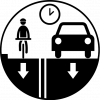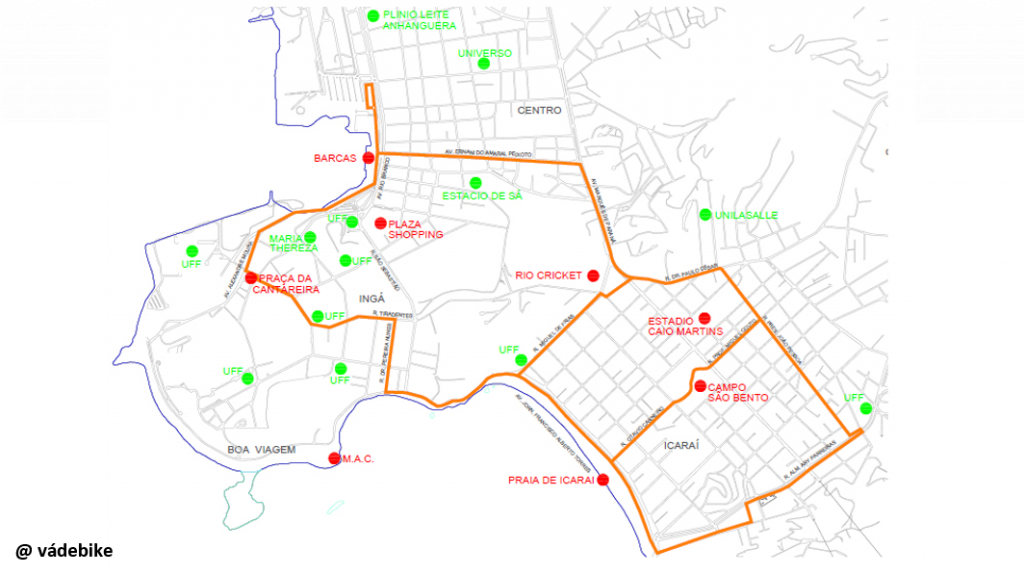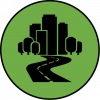
1. Presentation
Temporary closure of streets to motor traffic providing an opportunity to experience soft modes.
2. Objectives
Providing an experience of the public roads without motorized vehicles and the opportunity to practice active mobility, in comfort and safety conditions.
3. Measure’s Importance
Temporary cycling streets act as a mass marketing tool. Closing off streets to motor vehicle traffic gives people a new perspective on their city by showing how streets can be used if they are not full of cars. The measure also provides recurring public reminders of cycling and active transportation, reinforcing evolving social norms.
1. Good Practices
– It is essential to ensure all the necessary safety conditions, particularly the elimination of the road danger caused by motorized traffic.
– It is important to promote a good experience for everyone, namely through complementary initiatives such as cultural events, cycling groups or others.
– Alternative routes for motor vehicles should be implemented.
– Explain the principles behind the measures to make it clear its importance and impacts (See Information).
– Monitor and reframe measures to meet user needs without compromising sustainable ideals (See Management, Monitoring and Maintenance).
2. Actions
 | Open Streets “Open Streets” is a temporary streets closure programme, usually on Sundays, to encourager citizens to ride bikes, walk, run, rollerblade, skate. By closing the streets to motor vehicle traffic, people can see a new perspective on how the streets can be used if they are not full of cars, allowing them to have new experiences on the street without the danger and noise caused by motorized vehicles. Learn More: Open Streets Project (USA). |
 | Temporary bike paths Like the “Open Streets”, temporary cycle paths refer to the creation of temporary cycle paths on a road generally used by motor vehicles. It can be implemented on a regular basis (usually on Sundays and holidays) or on specific events (as in the context of European Mobility Week). It is a tactical urbanism action that allows to try a solution before permanent implementation. All safety conditions must be guaranteed, particularly the elimination of the road danger caused by motorized traffic. May also include the provision of bicycles as well as support and repair points. Learn more: Ciclofaixa (São Paulo). |

In Niterói (Brazil), to celebrate Mobility Week (21-28 September 2013), the future university cycle circuit was demarcated by traffic cones. The city has implemented this initiative to promote cycling. At the same time, it was intended to enable the adaptation of other street users to the new traffic conditions.
1. Impacts
 | Mobility system efficiency The impact on the mobility system is limited to the duration of the action, but it is expected to produce effects beyond that period. |
 | Livable streets The actions have a significant impact on the street and the city as a lived experience, spreading a new perspective on the city. |
 | Protection of the environment The actions promote awareness of environmental protection. |
 | Inclusion, equity and accessibility Temporary cycling streets provide opportunities for everyone to enjoy public space, democratizing the access. |
 | Safety and comfort The temporary cycling streets allow the bicycle to be used safely and comfortably. |
 | Economic value This initiatives tend to stimulate local economy. |
 | Awareness and acceptability The positive experience resulting from the initiative has significant impacts on raising awareness and reducing resistance to cycling. |
Legend:
| Very positive | Positive | Neutral | Negative | Very negative |
2. Barriers
 | Legal The legal framework should be taken into account when developing temporary cycling street initiatives. |
 | Finance The initiative can be demanding in terms of material and human resources. |
 | Governance It can be very laborious to organize and requires a lot of manpower. Responsibility is usually assumed by the local authority (municipality) but may involve a wide range of partners. |
 | Political acceptability In starter cities, where cycling is not valued, it can be difficult to convince policy makers to remove the space for cars. |
 | Public acceptability Opposition by driver groups is expected. |
 | Technical feasibility Demands knowledge for temporary reorganization of city traffic. Usually, the local authorities responsible have teams with the needed expertise or the means to contact them. |
Legend:
| No barrier | Minimum barrier | Moderate barrier | Significant barrier |
3. Budget
| Area | Measure | Unit | Cost | Implementation year |
| Lisbon, Lisbon Metropolitan Area (Portugal) | Street rehabilitation event | Newspaper Ad (DESTAK) | 9 000,00€ | 2017 |
| Artist performance | 7 000,00€ | |||
| Street entertainment. | 10 000,00€ |
Case study 1: La Ciclovia (Bogota)
The Cíclovia Bogotana was created in 1974 and in 1995 the management was taken over by the Bogotá Municipal Authorities (IDRD – Recreation and Sports District Institute), becoming the most famous “bike path” event in the world and an example replicated by many municipalities worldwide (such as Sao Paulo, New York, Melbourne, Mexico City, Quito). It is an event that takes place every Sunday and holidays where the main roads of the city are closed to traffic and temporarily become cycle paths, creating a 120 km circuit that covers all sectors of the city and is used by approximately 2 million people (30% of the population). In addition to bicycles, the streets are occupied by joggers, skateboards, rollerblades, and stages are set up in various city parks where gym, yoga instructors and musicians lead people through various activities.
Impact:
 | Mobility system efficiency Bogota is in the transition from a “starter city” to a “climber city”, as the cycling modal share has increased from 0.58% in 1996 to 9.10% in 2017, so the creation of the Bike Paths is considered an important milestone. (Rosas-Satizábal & Rodriguez-Valencia, 2018), that triggered a range of other mobility management measures (including an extensive cycling infrastructure). Cycling policies are now included in city planning. |
 | Livable streets The Bike Paths brought people to the streets of Bogotá, in a city that used to be totally car-centric, showing that the streets can be used for other activities such as walking with children, running, cycling, promoting livelier streets. |
 | Protection of the environment In a city often suffocated by pollution, the Bike Paths have significantly improved the local environment (although no specific data are available). |
 | Inclusion, equity and accessibility A cross-sectional study showed that the Ciclovía programme correlates positively with bicycle use as a mode of transport, especially in lower social classes that have no other means of transport available (Gómez et al., 2005). |
 | Safety and comfort During the weekly event, a security infrastructure is put into operation. In addition, by reducing the streets utilized by motorized traffic, the event reduces road danger in the city, eliminates the danger completely in the streets where it is implemented and it allows drivers to temporarily place themselves in the place of cyclists, raising awareness about safety and comfort needs. |
 | Economic value Ciclovía has increased bicycle ownership rates in Bogota, which represents added economic value. |
 | Awareness and acceptability By using the street space generally reserved for cars and by opening it to bicycles and other non-motorized modes, bike lanes serve as a visible compromise for increasing bicycle use in a city. The Bike Paths programme has contributed to strengthening a widespread bicycle culture, increasing the passion for cycling and reducing the stigma associated with it, in what used to be a “car proud and bicycle shame” society. |
Legend:
| Very positive | Positive | Neutral | Negative | Very negative |
Cruz, W. (2013). Temporary bike paths at Niterói Mobility Week. Videbike. Accessed 9 July 2019. Available at: http://vadebike.org/2013/09/ciclovias-temporarias-na-semana-de-mobilidade-de-niteroi/
Gomez, L.F., Sarmiento, O.L., Lucumi, D.I., Espinosa, G., Forero, R., Bauman, A. (2005). Prevalence and Factors Associated with Walking and Bicycling for Transport among Young Adults in Two Low-Income Areas of Bogota, Colombia. Journal of Physical Activity and Health. 2 (4): 445–459. Accessed 3 July 2019. Available at: https://doi.org/10.1123/jpah.2.4.445
Rosas-Satizábal, D. & Rodriguez-Valencia, A. (2018). Factors and policies explaining the emergence of the bicycle commuter in Bogota. Case Studies on Transport Policy. Accessed 2 July 2019. Available at: https://doi.org/10.1016/j.cstp.2018.12.007
